This interview is more like a travel than a conversation thanks to her busy life and being a multi talented artist.
Q.: Who is Helena Bajaj-Larsen? 24. Indian-Norwegian origins. Born and bred in Paris. Graduate of Parsons School of Design (NY). Founder of her own design studio. Textile Artist. Colorist. Photographer. Restless traveler. Loves all things design. Fashion. Interiors. Fine Art. When not making, can be caught writing or cooking. Lives between Paris, Dubai and India.
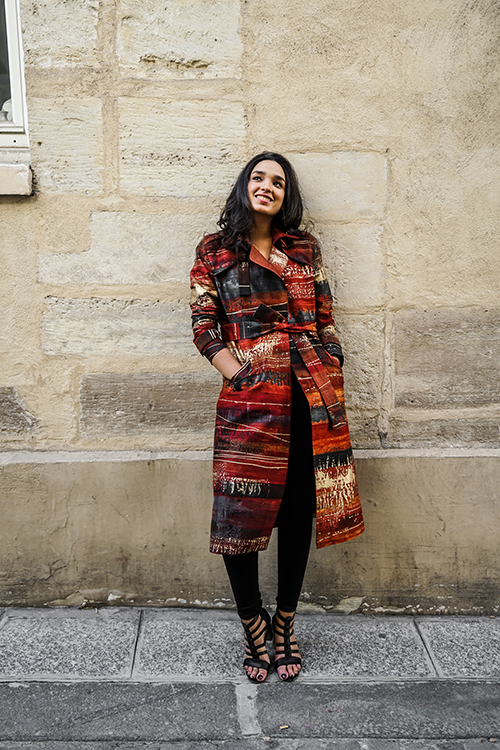
Q.: What is your definition of fashion? It is something on the human body that I consider an external manifestation of its wearer’s mind. It can reflect their taste, their interests, their inspiration, their positions on certain matters, their belonging to a culture or movement, their social status… list goes on. It can be an act of adhesion or an act of differentiation. An effort to blend in or an effort to stand out. It can also, yes, be a very unintentional act, if the wearer cares little about fashion or maybe does not have the means to diversify. That being said, whoever we speak of, I like to believe it is a choice. We put things together and throw them on, however simple and humble it may be, we are nevertheless crafting an image of ourselves every morning.
Q.: How important is the textile quality to create a garment? It is everything. We source the highest quality silks from specialized organizations around India who are dedicated to keeping the art of handloom (along with other cottage industry skills) alive through the thorough training of entire villages, in turn creating both skills and jobs where there is scarcity of both. I used to work with high-end commercial silks, also great quality, but when I heard of these initiatives I felt it would be in line with the brand ethos to take them on board as a supplier and stop working with mass produced materials.
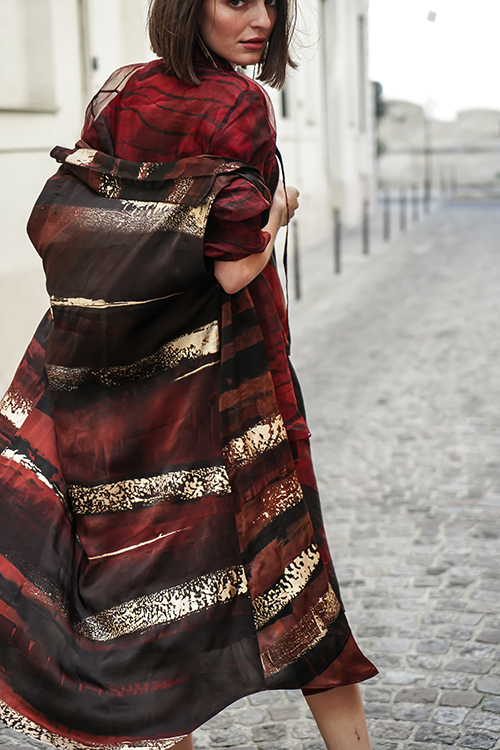
Q.: Where do you take inspiration from? It begins with photography, I travel a lot and take photos of all the new colors and textures in my environment that I find interesting. Then based on those images I develop color stories which will then serve as mood boards which I refer to as I create the textiles. It dictates the colors I use as well as the mark-making involved in the surface development. After fabrics are made, then they go to my unit where I send designs for garments that are to be cut from them.
Q.: What do you feel when you create a new fabric? It is very satisfying to take something totally blank and to construct it bit by bit (in my case the surface, not a mechanism) and then arrive to something utterly different to what you began with. You’ve taken something and made it special, given it a purpose bigger than what it had when it came to you. This for me is how I sum up the relationship between artist and material.
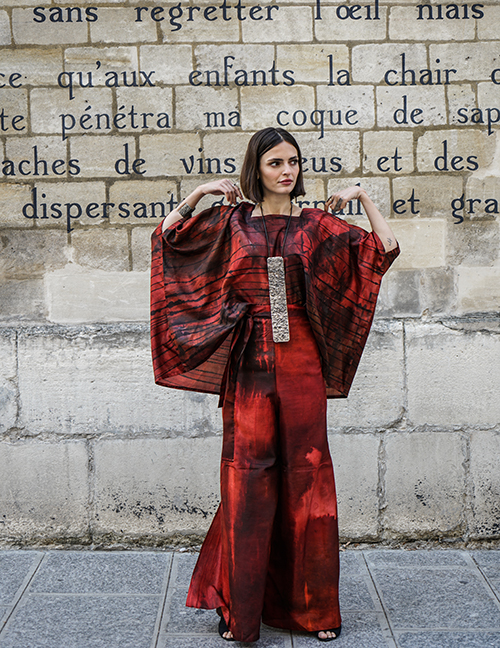
Q.: Who would you like to collaborate with and why? In the fashion space, my ultimate dream would be to collaborate with Hermès, their legacy in terms of silk scarves is in a league of its own. That being said, I want to collaborate with people outside of fashion even more! Any interior designers, product designers, architects. It would be such an experience to see my work taken to a larger scale visually and an entirely different audience.
Q.: Which city would you call home? Paris is home. It is where I grew up. I was born there, I did most of my schooling up till the age of 18 there and still spend about half of the year there.
Q.: What’s your favorite fabric? Raw Silk, no doubt. The way it lends itself to my process is really rewarding. There is a texture within the fabric itself long before I even apply paint to it. And then due to this grainy surface, any treatment becomes magnified and every stroke is amplified. It is a great fabric to work with. Even the gold details added post-steaming, they cling to the fabric fibers in a way that is very unique.
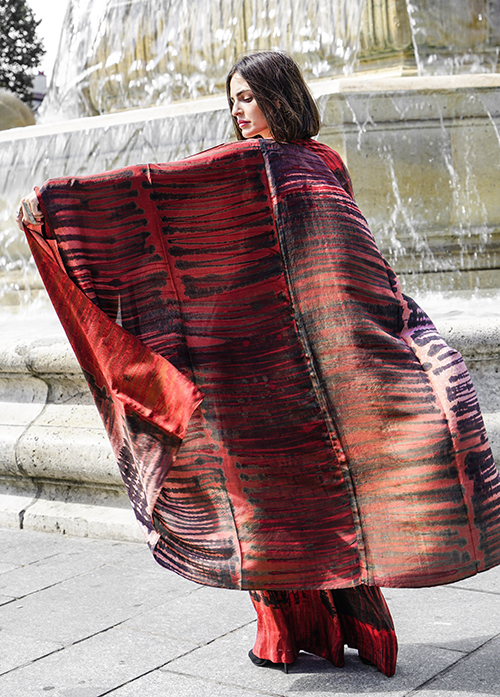
Q.: One of the most used up word these days is sustainable fashion, what’s your opinion about it? I think it should be embedded and be the frame of work for all that is done – to the point where there is no such thing as a “sustainable brand” anymore. Certain practices should become the norm. I think it starts with production – we as an industry make too much, all the time, and don’t sell all of it: it doesn’t make any sense.
Q.: Fabric, jewellery, fashion and what’s coming next? Hopefully home products, art commissions. I have already began making wall art for certain clients and had a few orders of this kind a few weeks back actually. Also working on some ideas for a collaboration with a dear friend who just started an architectural design studio, Pendhapa Atelier.
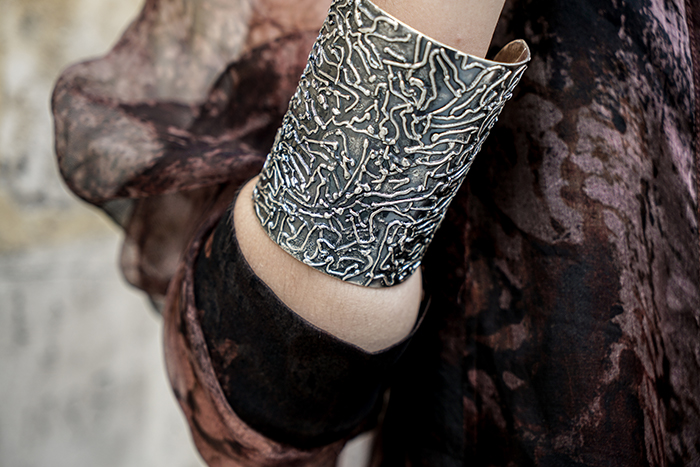
Q.: How do you recharge yourself? People. Old friends provide a great source of comfort and recharge when things can get tough. New encounters make for exciting experiences filled with discovery. It is all a big network at the end of the day, whether it’s for support through the old or for inspiration through the new. Travel. Exploring new places and experiencing new cultures is one of my all-time preferred creative fuels. Stepping out of comfort zones, and familiar environments means you give your mind a new framework. Additionally when I travel I often try to visit some of the local studios so I can see what techniques are chracteriric of the given culture, country I’m in. There is nothing like it! Books. As of recently, due to confinement, I decided to pick up on reading. A habit I left some seven years ago claiming to be a “visual person” who “couldn’t gain much from a book”. Well I was obviously very wrong haha. I read nearly 20 books in the last two months and they have been a great way of recharging during this down time.
Q.: What advise would you give to new designers? I actually still consider myself a new designer to be honest! But I would tell recent graduates to really just think of what it is they want to bring into the market: is it new? Is it helping someone? If not, is it an aesthetic innovation? Then, consider the connections they have to suppliers and the whole manufacturing side of things – this is the most painful bit. And lastly, do you have a buyer in mind? Try to define this person.
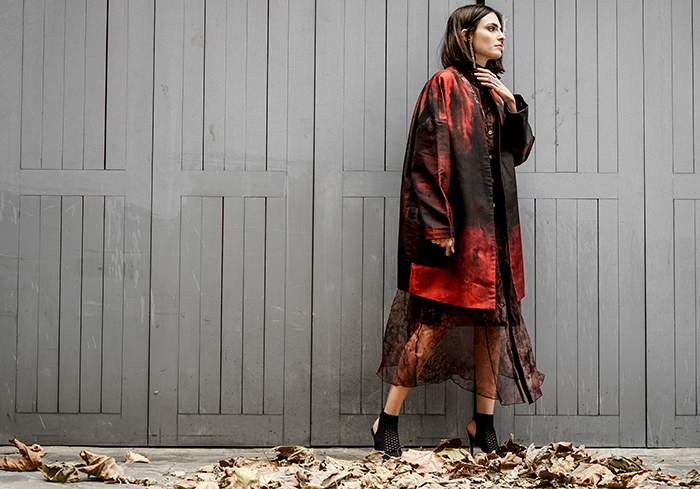
Q.: Three adjectives to describe your brand. Artistic. Transformative. Unique.
Q.: What’s the meaning of colours for you? Color is everything. It fuels our lives. It’s like visual flavoring and enhances just about anything it touches. It brightens the bleak. It animates the empty. It essentially breathes life into all, ourselves included. Some psychologists are even able to associate human behavior and emotion to color. This just goes to show how crucial color is not only in the external visual imagery present within our society but internally as well, to each individual.
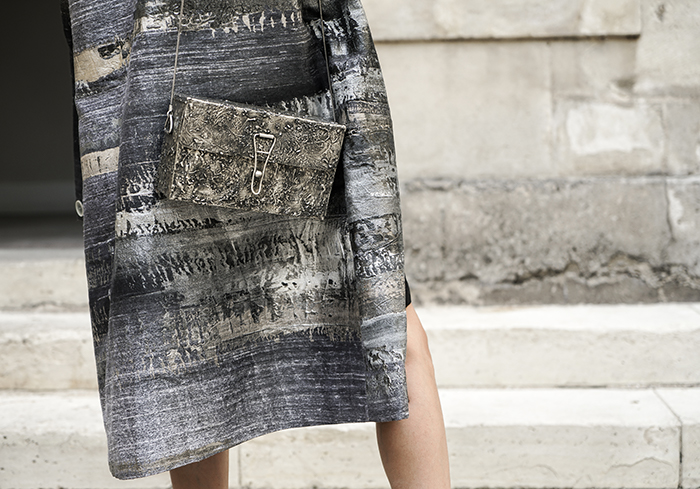
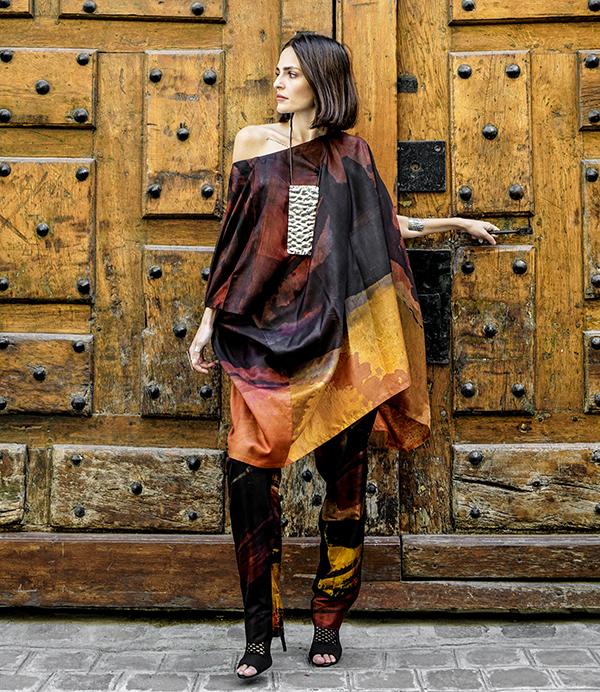
Model: Nour Mady
For more info visit www.helenabajajlarsen.com

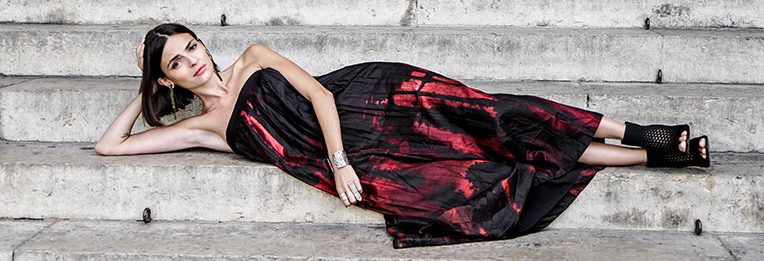
0 Comments